Córdoba – Andalusia Spain
Córdoba lies on the banks of the Guadalquivir river and gets its magnetic charm from the riverfront lined by cafés, bars, and restaurants; the sparkling white buildings trimmed in sky-blue, red, and sunshine-yellow; the weather-worn red clay roof tiles; the winding, colorful maze of lanes; the clip-clopping of horses’ hooves pulling open carriages; and the historical sites that give one a glimpse of the richness and diversity of its past.
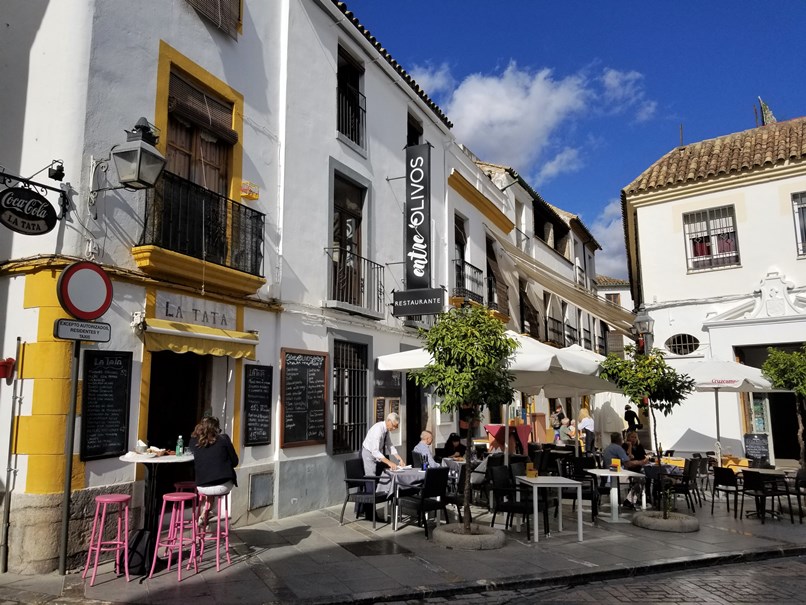
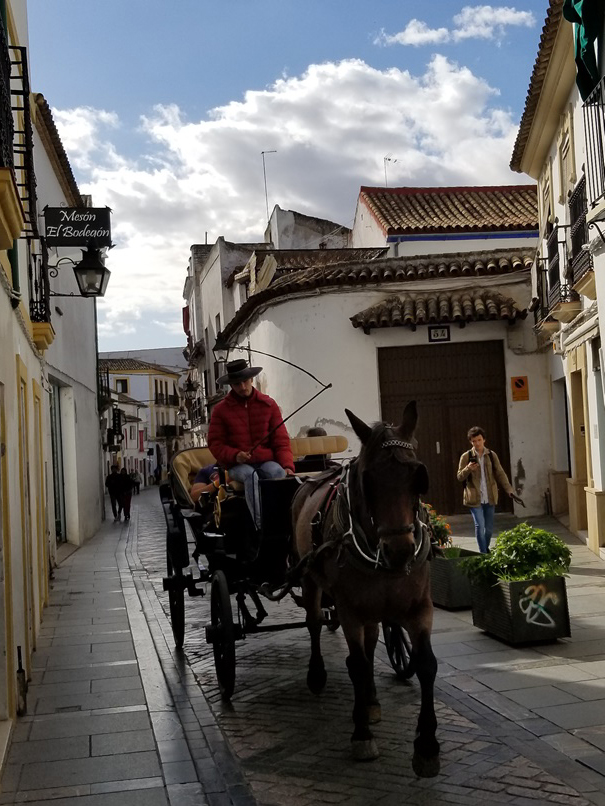
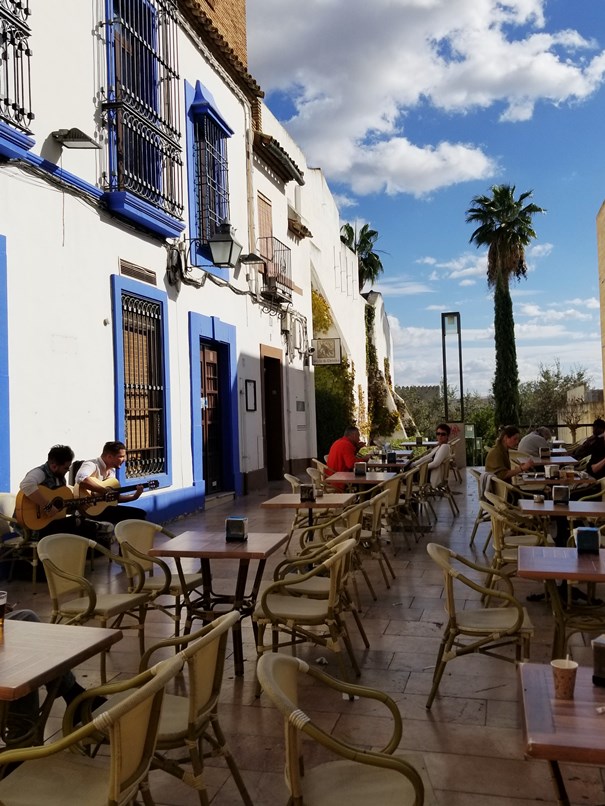
The Romans built the original city in 206 BC. It was overtaken by the Visigoths in the 5thCentury and became the capital of Islamic Spain following the 8th Century Moorish conquest. Under Moorish rule, the city became a cultural center of art, architecture, philosophy, and poetry. In 1236, Córdoba was reconquered by the Spanish Christian Kings.
One of the first historical sites that come into view as one strolls along the riverfront is the Puente Romana – The Roman Bridge, which straddles the Guadalquivir river. It was built in the 1stCentury and has since been rebuilt several times. Today birds of all varieties congregate to feed in the rich vegetation that thrives on the riverbanks, and a statue of the patron saint San Rafael stands on the bridge.
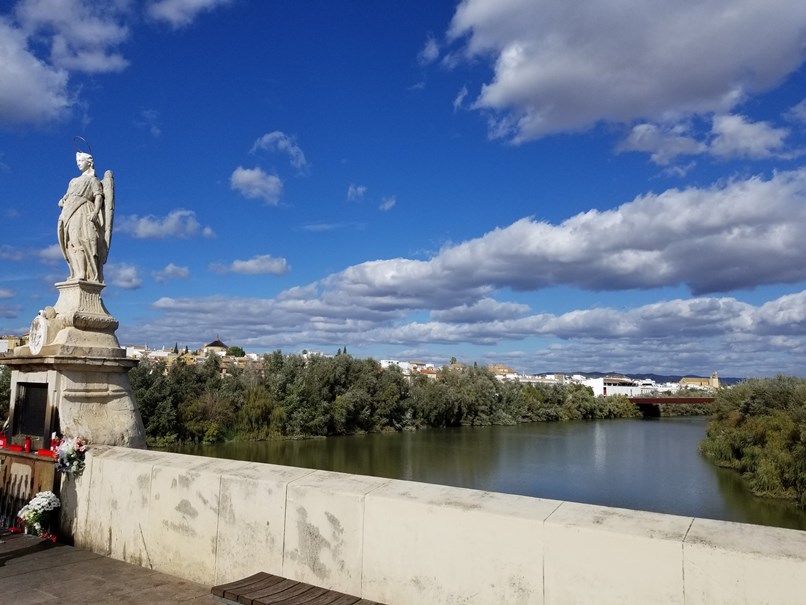
Explore the streets of Córdoba, and you will notice numerous churches and sculptures that pay homage to San Rafael. In the 14thCentury, Spain suffered from the Black Plague epidemic, which swept through Europe and took millions of lives. It is believed that in Córdoba, the Archangel San Rafael revealed himself to Andrés de Roelas – a priest, and told him that he was the Angel who God had chosen to guard the city of Córdoba. After the revelation, the plague ended within a few days, and San Rafael was made the patron saint of Córdoba. A beautiful statue of San Rafael looking out across the city stands atop a pedestal in Plaza del Triunfo.
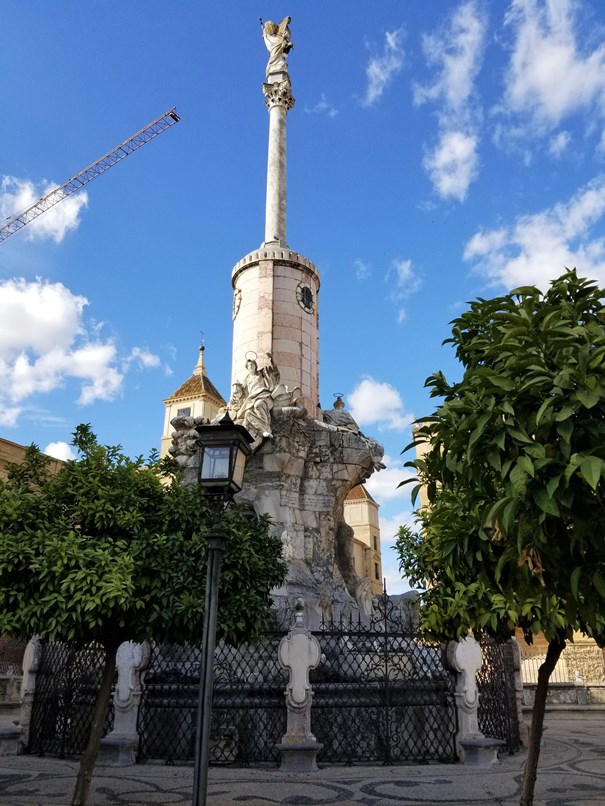
Alcazar de Los Reyes Cristianos – The Fortress and Palace of the Christian Kings – was built in the 13th and 14thCenturies on the remains of a Moorish fortress and palace, which in turn, was built on the foundations of a Roman castle.
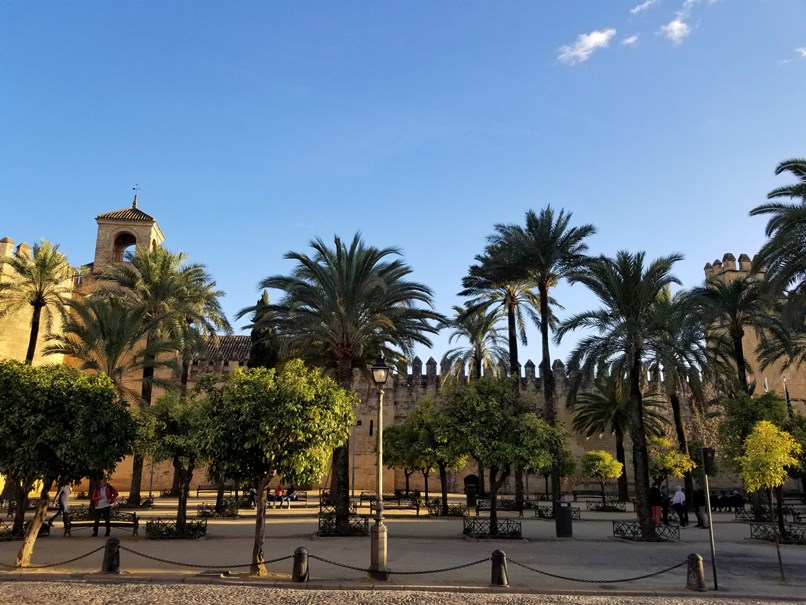
While the manicured gardens and courtyards are a treat, if you are an art and history enthusiast, don’t miss the original 2ndCentury Roman mosaics inside the palace museum, which were uncovered during excavations of Plaza de la Corredera in 1959.
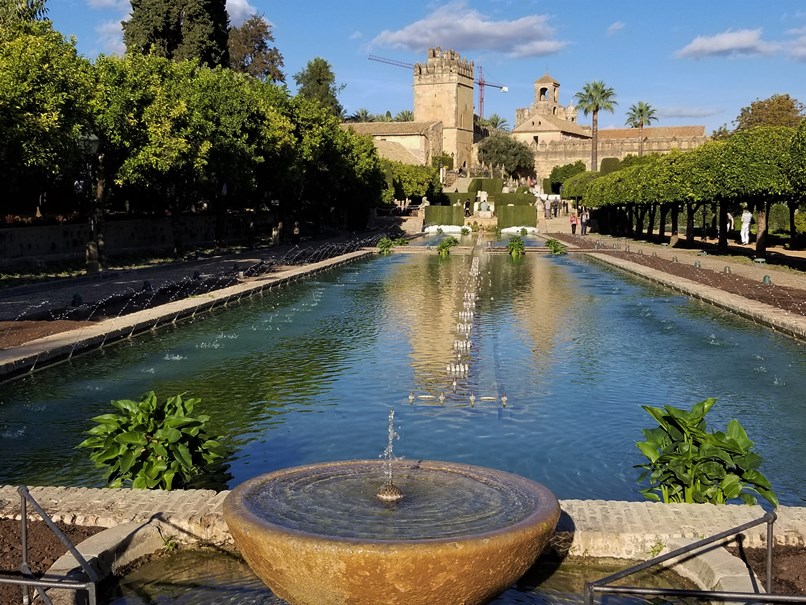
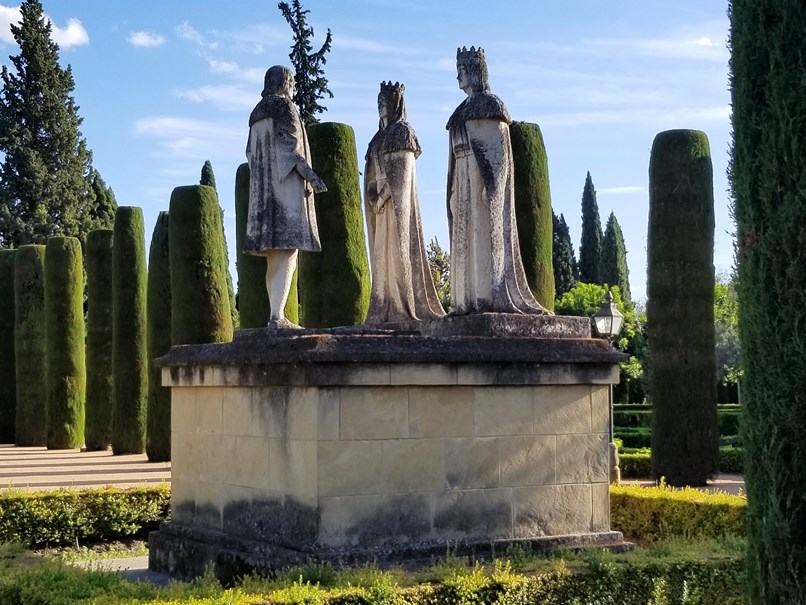
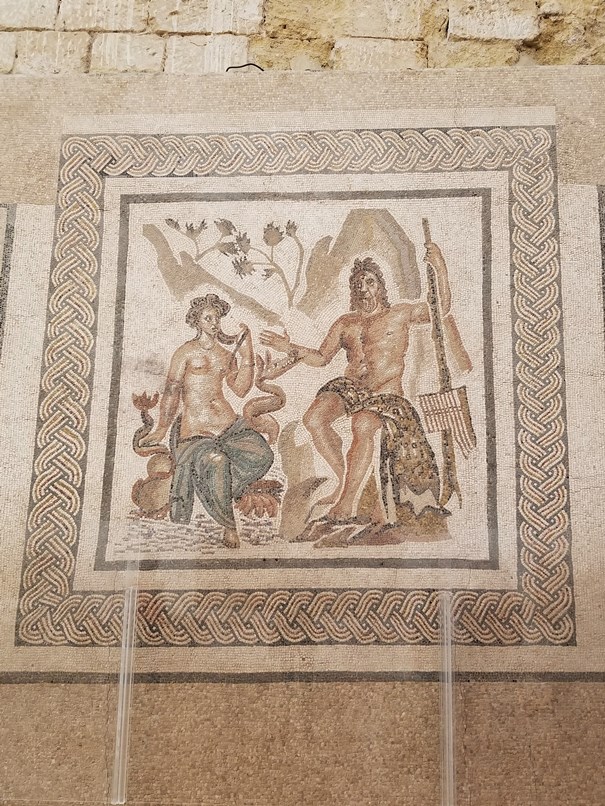
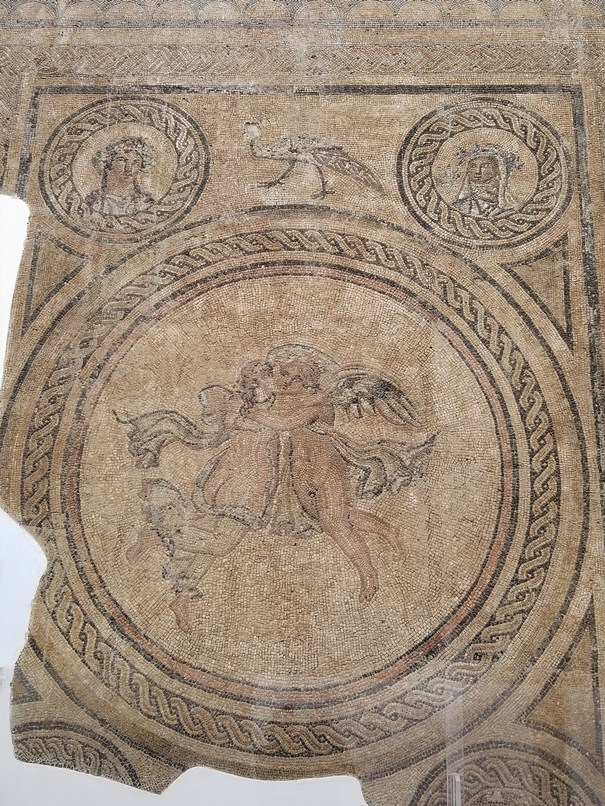
La Juderia – The Jewish Quarter.
Córdoba is incredibly rich in layer upon layer of history. In the Middle Ages, the Jews and Moors of Córdoba coexisted in a dynamic environment of philosophy, poetry, medicine, and science. The great Jewish philosopher, physician, and sage, Maimonides, also known as The Rambam, was born in Córdoba in 1135. Unfortunately, in 1148, religious persecution changed the lives of the Jewish community of Cordoba. Maimonides and his family left Spain and moved to Fez-Morocco, where they stayed for several years before finally settling in Egypt. Maimonides’ ancient teachings and writings on Jewish law and ethics are contained in the Talmud, the book of Jewish laws, values, and ethics. An elegant statue of Maimonides stands in the labyrinth of lanes that make up the Jewish Quarter.
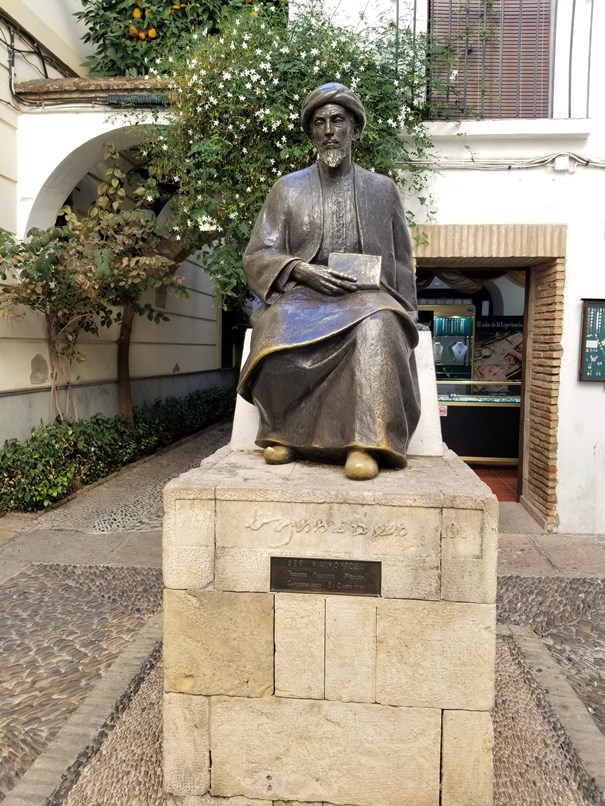
The tiny Sinagoga – Synagogue was built in 1315 and is one of the few remnants of Jewish life in Córdoba. When the Jews were forced out of Spain in 1492, it became a hospital, then the property of the Shoemaker’s Brotherhood of St. Crispin. Thanks to Don Mariano Párraga, a priest who discovered the decorative covered plasterwork when parts of the mortar covering the walls collapsed, it was declared a national monument in 1885, and restoration began. The intricate, lace-like, Mudejar plasterwork and the bands of Hebrew lettered prayers are breathtaking.
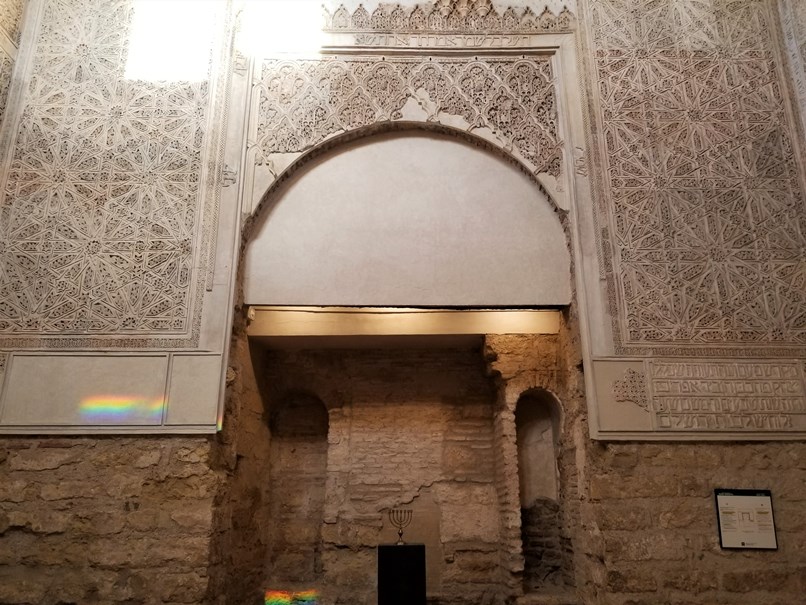
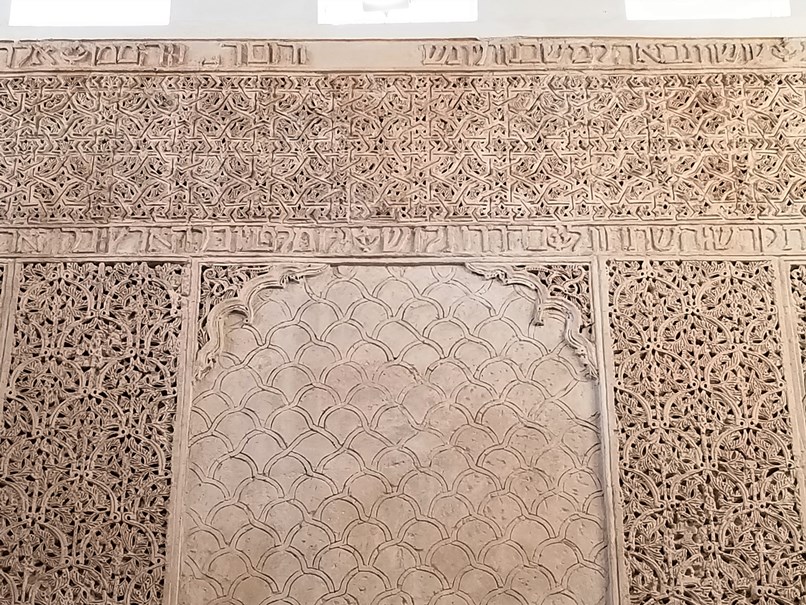
Enter or leave the Jewish Quarter through Puerta de Almodovar, the only surviving gate out of nine gates built by the Moors inset into the ancient, fortified city walls. Over the centuries, it has been restored several times.
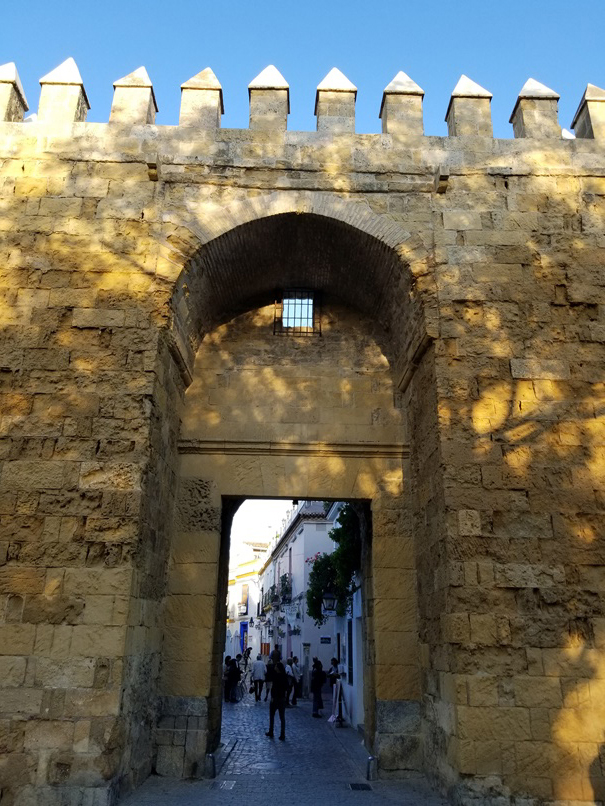
Outside Puerta de Almodovar on Calle Cariun, a stream ran from the gate along the fortified town walls. The stream was transformed under the direction of the mayor of Córdoba into a charming man-made stream where water falls from one pool into another. (Unfortunately, when we visited Córdoba, the pools were dry.)
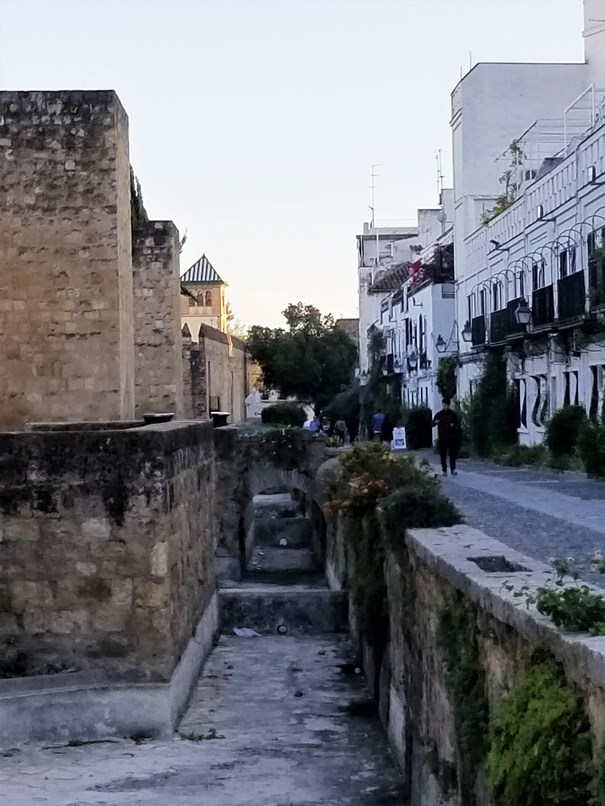
Templo Romano
Adjacent to the Town Hall stands a 1st Century Roman temple discovered in the 1950s when City Hall underwent expansion. Its construction began during the reign of Emperor Claudius (41-45 AD) and was completed forty years later during Emperor Domitian’s reign. What one sees today is primarily a reconstruction. The only remnants of the original pagan temple are its foundation, the altars, and some capitals. Prior to 1950, marble pieces from capitals and columns had been found in the area, which suggested that it may have been the site of a historic structure. The Temple Romano is located at an angle where Calle Claudio Marcelo and Calle Capitulares meet. The surrounding neighborhood has a terrific youthful vibe and boasts trendy bars, restaurants, and boutiques.
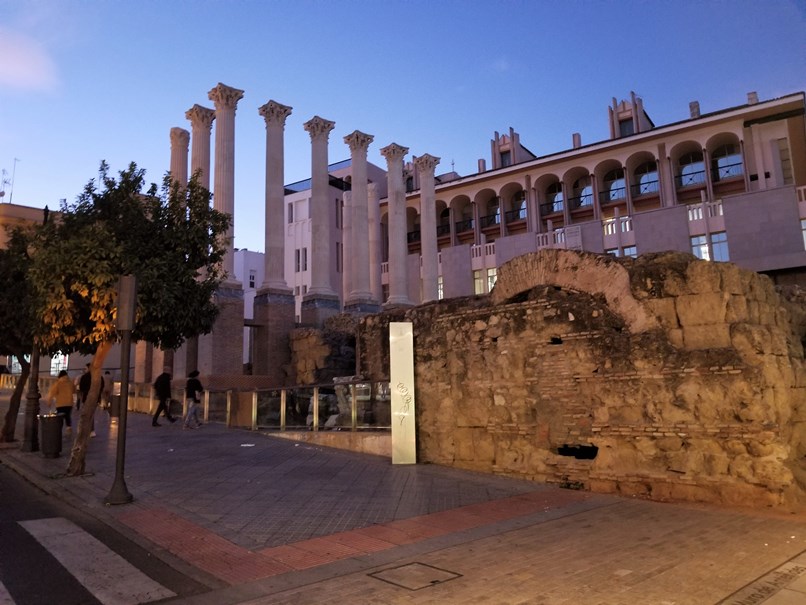
The Royal Stables
King Felipe II of Spain was a horse lover who in 1570 ordered the creation of the Royal Stables of Córdoba, where he planned to raise the finest thoroughbred horses in Europe. The Andalusia Horse, also known as The Pure Spanish Horse, became a symbol of the Spanish Empire, and to this day, remains one of the most sought-after breeds in the world.
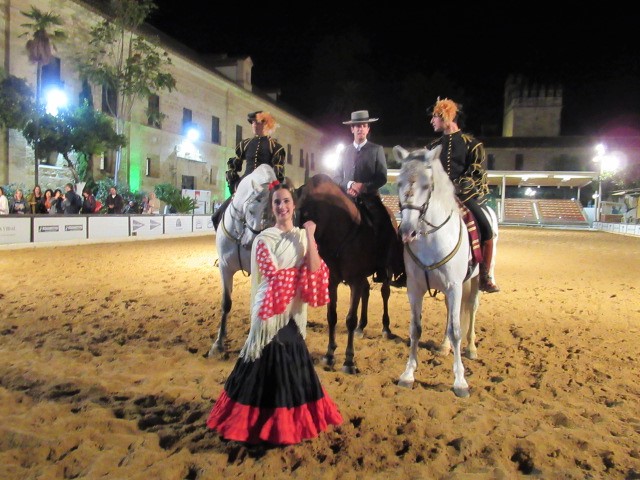
Nightly horse shows for the general public are held at the Royal Stables adjacent to the Alcazar. The program is a mesmerizing ensemble of Andalusian horsemanship, including Andalusian cowboys, flamenco dancers who perform with individual horses, and horses who dance and prance in perfect unison with each other and their human partners. The horses have a regal bearing. Their finely honed skills, and the bond between rider and horse, who move as one, is remarkable.
(Tickets can be booked online or purchased at the booth across the street from the Alcazar Palace.)
Córdoba’s Mesquita, the great Mosque, is not to be missed. Its splendor and size are overwhelming. If one sees only one site in Córdoba, it has to be the Mesquita, akin to a historical record of Córdoba’s past.
The Romans built a temple on the site, which the Visigoths destroyed in the 5th century. The Goths built the Church of St. Vincent, which was destroyed by the Moors who built the Mezquita over a period of 200 years. When the Spanish Christian Kings conquered Córdoba, they were so smitten by the Mezquita’s beauty that they built a cathedral in its center among the Moorish columns and arches. It was enlarged over time and now occupies the equivalent of several city blocks.
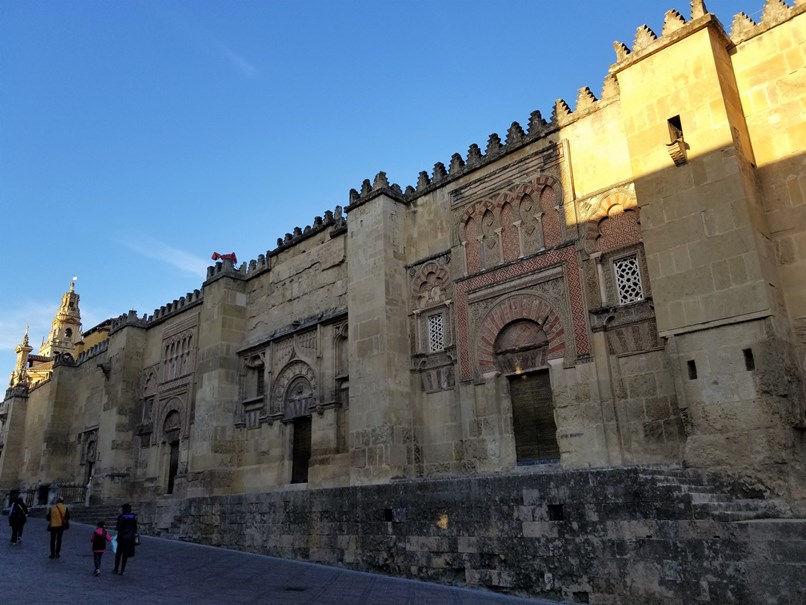
Enter the Mezquita via El Patio de Los Naranjos – a courtyard filled with orange trees. In the month of May they are covered in fragrant orange blossoms, and come summer, their branches are laden with plump, ripe, oranges.
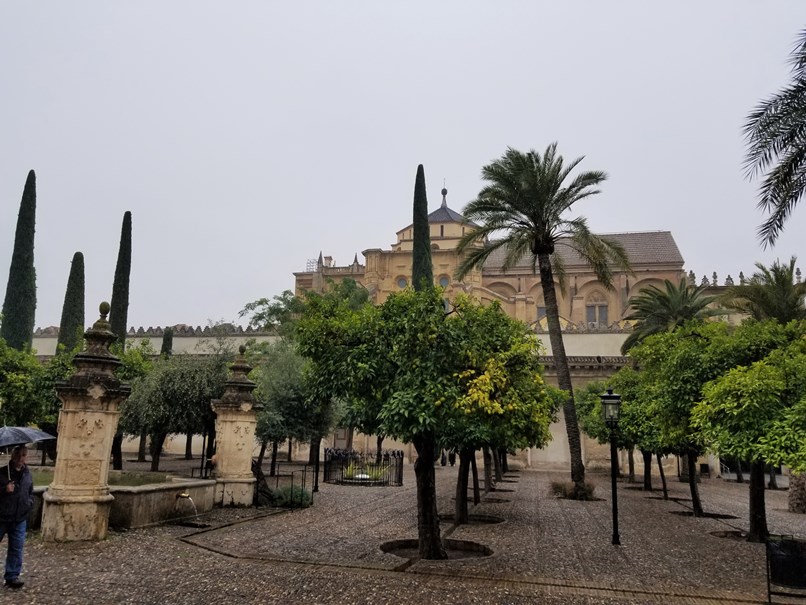
One’s first sight of the interior is literally jaw-dropping. Plan on spending a minimum of an hour to take in the graceful forest of columns, the arches, the intricate Mudejar patterns, the Christian cathedral at the center of the Mosque, and the stone relics.
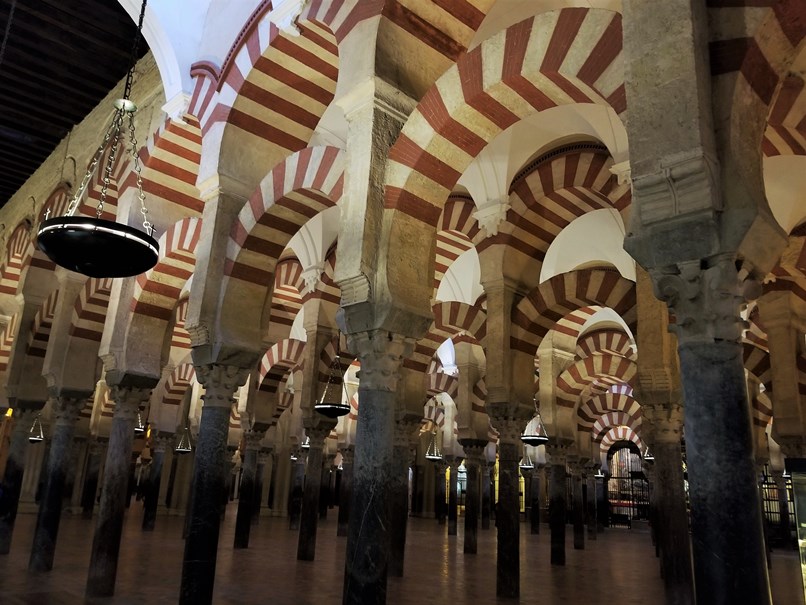
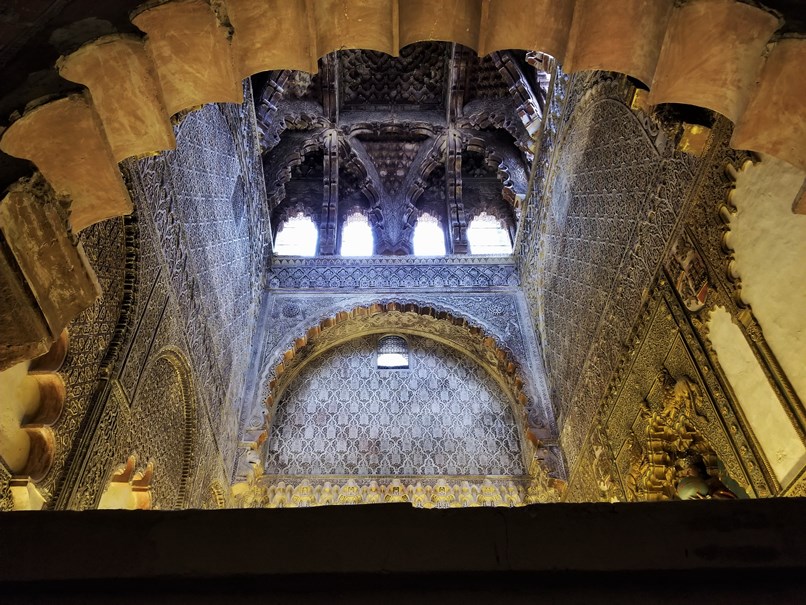
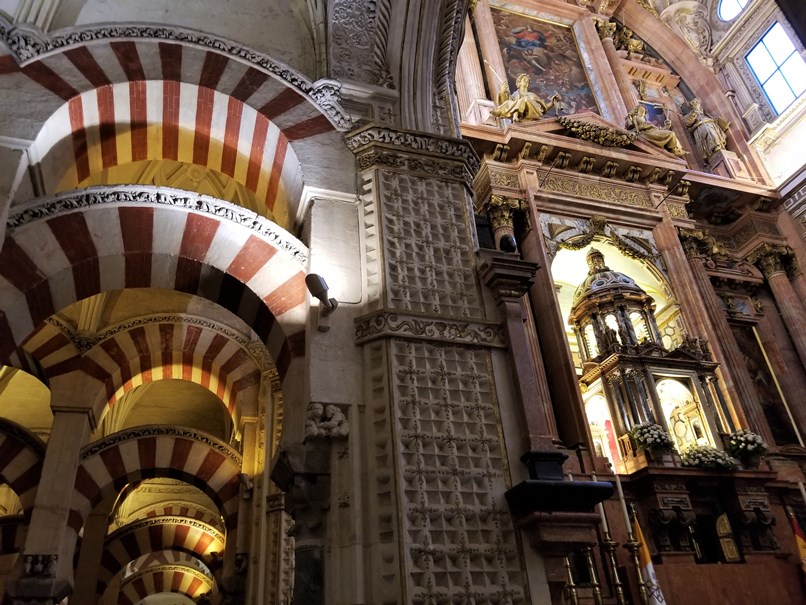
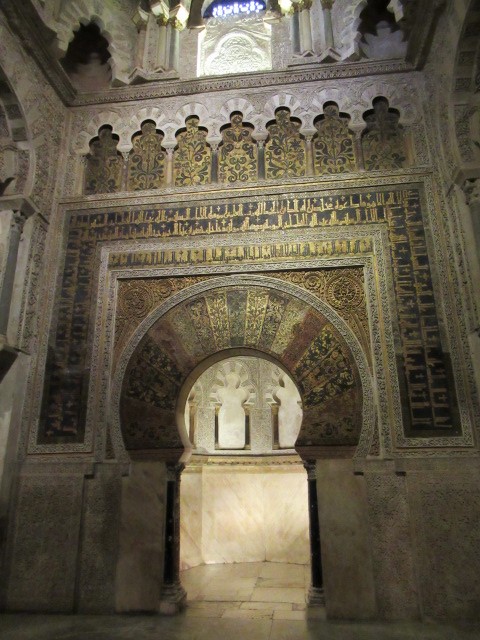
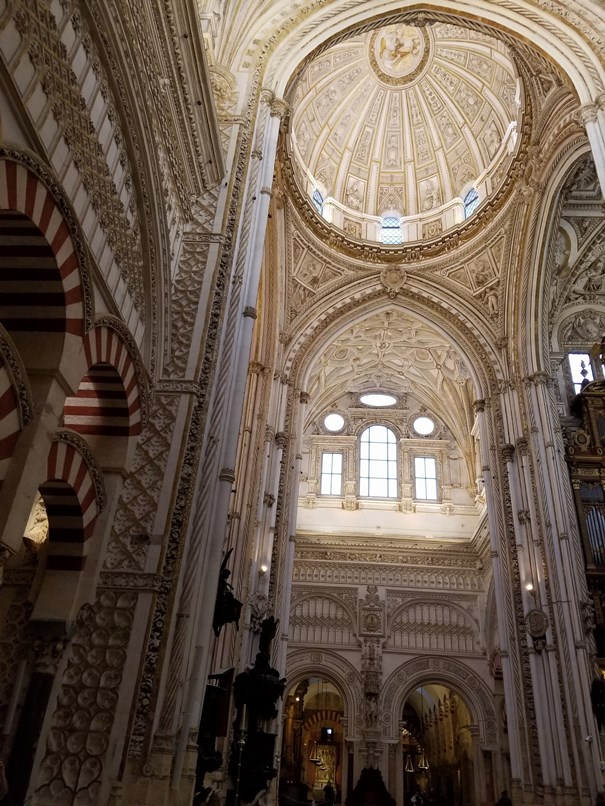
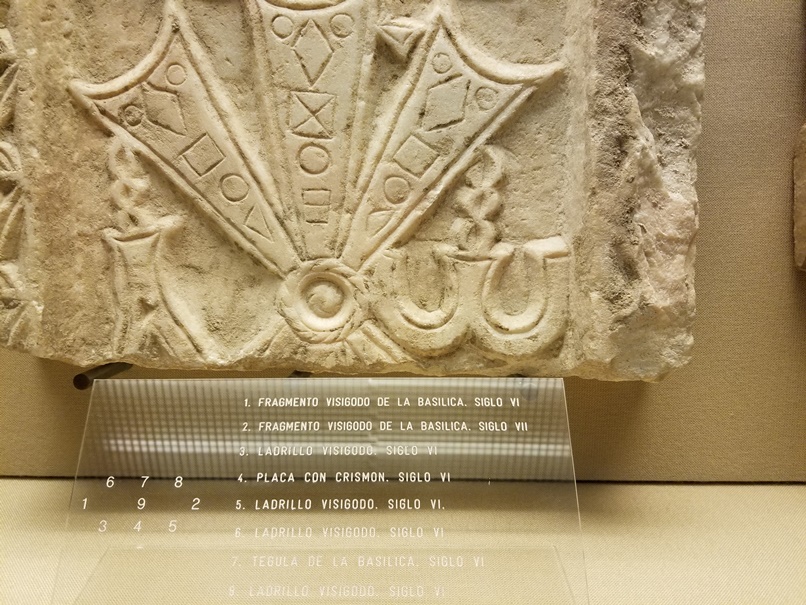
Tip: If you line up outside the side door at 8:15 am – the Mezquita opens its doors from 8:30 am to 9:30 am to visitors at no charge. Tour groups are not granted access before 10:00 am.
There is a roster of atmospheric accommodations tucked into the labyrinth of Córdoba’s narrow cobbled streets. We stayed at Palazzo Hotel Madinat, which is a treasure. The décor throughout is sophisticated, subtle, and innovative. A retractable roof floods the inner courtyard with glorious sunshine. No detail is overlooked, from the welcoming goblets of freshly squeezed orange juice on arrival; to the bouquet of fresh lavender, the home-made truffles, cookies, and tea tray in the suites; to the impeccable service.
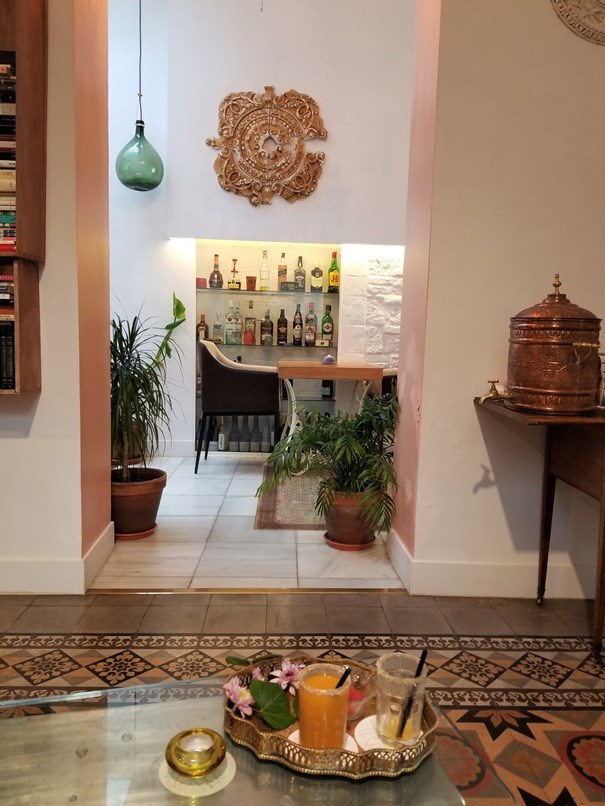
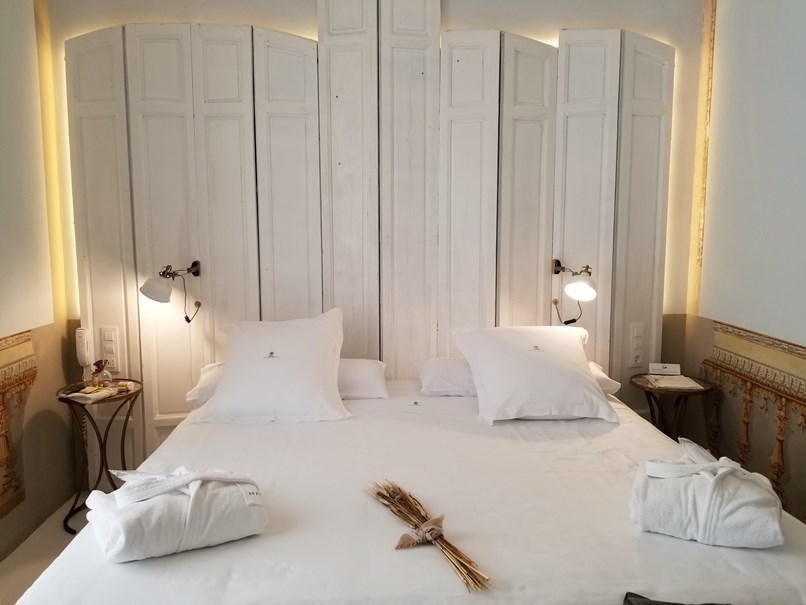
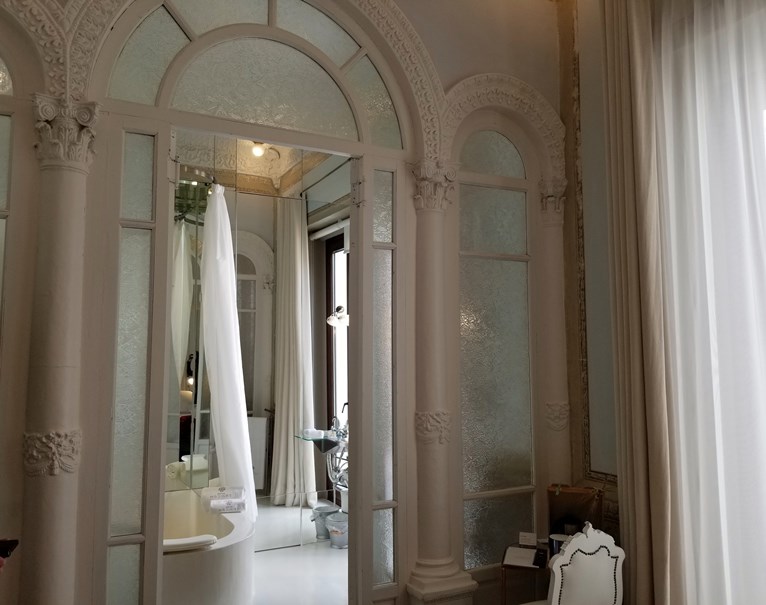
While in Córdoba, indulge yourself and follow the aroma to the pastry shops that sell freshly baked Colación – a crisp pastry filled with dulce de leche and topped with a lemon glaze. A scrumptious treat for which Córdoba is renowned.
Plan on spending at least two days and two nights in Córdoba.
Note: Mudejar art flourished in Southern Spain between the 11th and 16thCenturies after the reconquest of Spain by the Christian Kings. It is a unique fusion of Muslim, Jewish, and Christian art.
